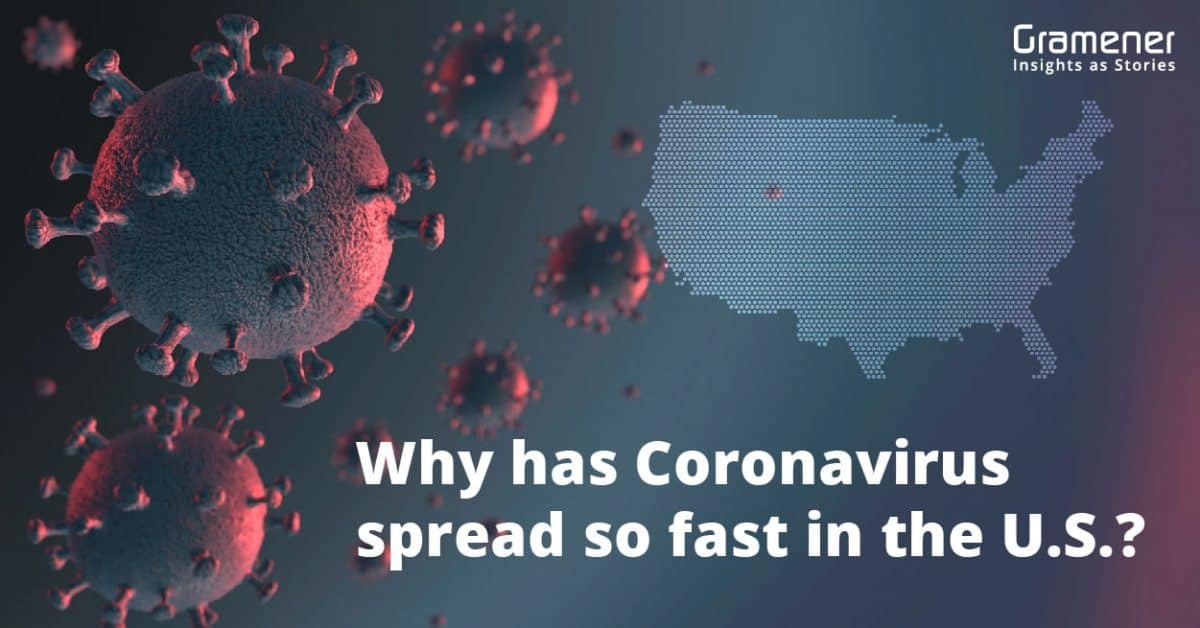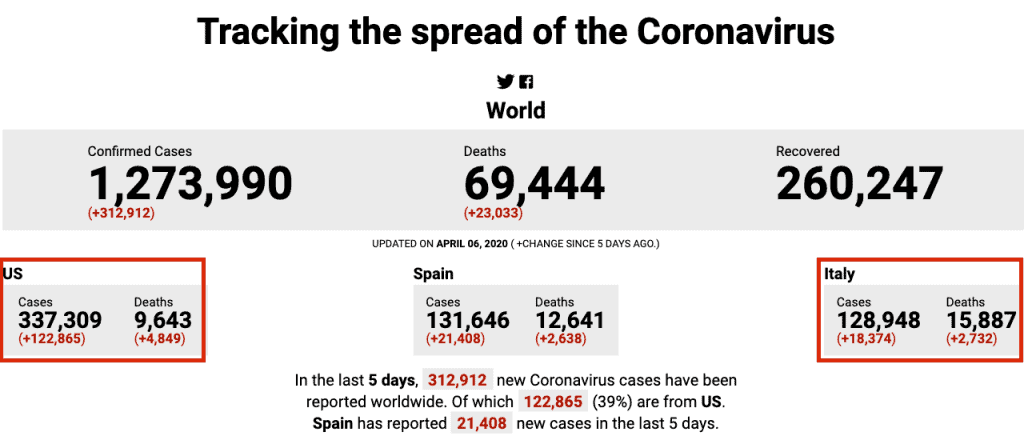The number of Coronavirus cases worldwide crossed 1.2 million as of April 6, 2020. China, where it originated, now stands fifth in the number of cases.
Four developed nations have recorded a higher number of cases than China– the United States, Italy, Spain, and Germany. The U.S. now accounts for one in five cases worldwide (the highest).
In the U.S., nearly half of the country’s cases tested positive in New York and neighboring New Jersey — an alarming 1,22,139 cases were reported in New York alone.
So where did the U.S., and particularly New York, go wrong?
The answer lies in the absence of a lockdown or strict social distancing measures. To test this, let’s take a reliable measure of activity — traffic on the roads and take a more in-depth look.
A comparison
The above picture is a map of the fashion capital Milan, Italy on April 3 at 4.40 pm. Milan was among cities worst-hit by the virus. The traffic layer plotted on top of it doesn’t show much traffic movement at all.
Italy, though delayed in deploying lockdown measures (The first case was reported on Jan 31, the lockdown was announced from March 10), followed through with social distancing and keeping the streets empty.
The lockdown has led to an improvement in the situation. On April 1, the country recorded its lowest number of confirmed cases in one week.
However, in the U.S., it’s a different story altogether. First, there were no strict lockdown measures in place despite the rapid increase in the number of cases. The country only announced on March 16 an “advisory”, which has been extended to April 30.
Second, unlike Italy and other developed countries, the U.S. has paid sick leave only for a section of the workforce. This means that more people are on the roads working or trying to get to work.
A traffic layer superimposed on a map of Brooklyn, New York City, shows that there’s a lot of red on the lanes, indicating higher traffic density.
The traffic data shows that traffic peaks between 5-6 pm and drops significantly after 6 (Look at Brooklyn bridge for a quick reference).
Unlike other developed nations, the U.S. has no policy that assures paid sick leave for employees working in a company with less than 500 employee or contract workers or gig economy workers or a large group of self-employed entrepreneurs This puts unorganized workers and contract workers at a risk, as they continue to go to work and thereby don’t practice social distancing.
It also means that these workers — who need to pay their bills and hence need to work — are also at risk of putting more and more people they come into contact with at risk.
The rapid spike in cases in the U.S. is, therefore, a wake-up call for the country to consider taking more substantial steps to ensure that all workers are covered under a paid sick leave policy. As more people contract the virus, hospitals will fill up and healthcare expenses will mount, and it will also drive up the death rate. The ultimate aim should be to keep people off the streets so that the risk of infection is minimized.
Notes from India
In India, a 21-day total lockdown was imposed from March 25. This has affected the workers who are not under any contract, and that means the majority of the workforce — over 88% of the country’s employment is informal, according to this International Labor Office report.
Since migrant workers form a large part of the workforce, and because they have no income to support their expenses such as rent, utilities, and provisions in their city of work, several of them have been forced to return to their home towns.
Due to the 21 day lockdown, the absence of transportation has meant that Indian cities are experiencing a mass exodus by foot, which again puts more people at risk of contracting the virus due to the sheer number of people on the roads.
However, the Indian government has announced a massive Rs 1,700 billion ($22.51 bn) relief package for the poor and the daily wagers. The package includes a mix of food security and direct cash transfer benefits which shield poor families during the lockdown, according to this media report.
The central bank of India has also approved a cut in interest rates and allowed banks to pause some loan repayments.
More Data Stories on Coronavirus
- Track the Spread of Coronavirus Worldwide. Our sources for the data are CDC, ECDC, WHO, and Johns Hopkins CSSE.
- Simulation to help Identify counties or districts with lower hospital capacity and resources
- A community-sourced set of simple best practices to follow to contain the spread of Covid-19. The messages are available in several Indian languages
- From canceling travel to extending sick leave, how are organizations tackling Covid-19? Here are insights from the NJTC survey of 250 business leaders in the U.S.


Hi! Interesting study. But, aren’t people afraid or cautious during those times – when a lockdown is not imposed in Manhattan or Brooklyn! Isn’t it awareness amongst Newyorkers via effective communication or is it really the government’s fault? What do you say?